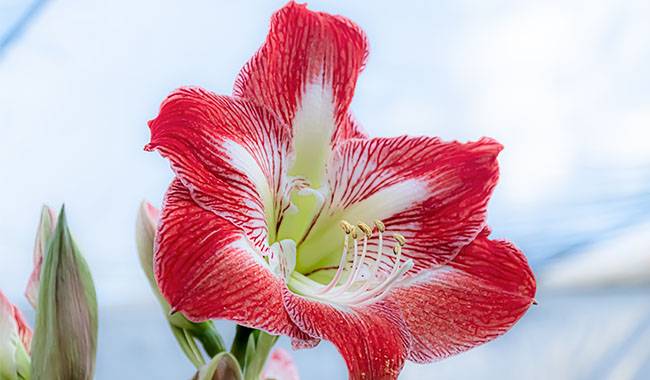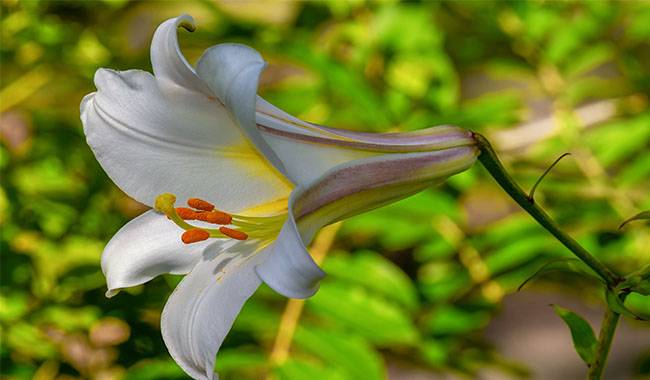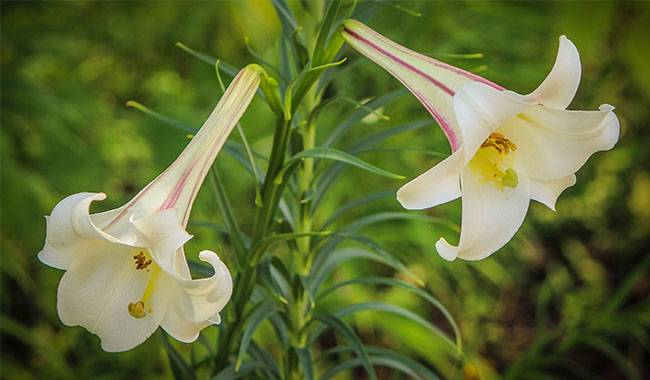
Lilium is the queen of bulbs and a true favorite of gardeners and florists. Almost every garden and every flower store have at least one variety of Lilium flowers. But potted and indoor Liliums are only just beginning to catch on, even though other garden bulbs have long been used as indoor decorations. Meanwhile, Lilium flowers are no less adaptable to potted forms than tulips, hyacinths, and daffodils. They just require larger containers and attention. I’ll show you how to grow & care for Lilium in your room in this Thumbgarden article.
SELECTING LILIUM FLOWERS FOR INDOOR CULTIVATION
Both cultivars are bred specifically for indoor cultivation and compact cultivars that produce almost no offspring can be grown successfully indoors. Lilium flowers that grow well indoors include.
Special “potted” varieties of Lilium regalum.
Varieties of Lilium speciosum.
Lilium longiflorum.
Lilium auratum.
Potted varieties of Lilium mid century and Asian hybrids.
Preference should be given to the dwarf or low 15-23 inches (40-60 cm) for best height and plain early cultivars. Choose a color scheme that suits your taste.
For indoor cultivation, use large (40 g or more), healthy bulbs – the best, selected specimens.
CONTAINERS AND SUBSTRATES FOR GROWING LILIUM PLANT

Do not plant Lilium flowers in individual containers: plant Lilium flowers in groups of 3-6 bulbs to allow the substrate to quickly grow full of roots and achieve a greater decorative effect.
For indoor Lilium, choose very large, deep containers with good drainage holes. Pots with a height of 12 inches (30 cm) or more – an optimal depth of 15 inches (40 cm) or more is sufficient. Depending on the diameter, calculate the volume of the desired group: For each Lilium, leave 6-8 inch (15-20 cm) cubes of soil. In a container with a diameter of about 15 inches (40 cm), 3-4 bulbs can be planted.
Lilium flowers will only thrive in loose, neutral soil in a super nutritious substrate. You can look for special substrates for Lilium flowers, or choose soil for beautiful flowering plants, or mix turf soil with compost (or hummus) and a portion of all-mineral fertilizer.
To prevent compaction problems, it is best to add a handful of coarse sand and other loosening agents, such as perlite, to the ready-made substrate. drainage of Lilium flowers is a must, with at least a 2 inch (5 cm) layer of drainage.
Without the possibility of supplementary lighting, Lilium flowers can only be planted from the first decade of March for indoor cultivation. When planting by a certain date and offsetting the flowering period, it is worth noting that it takes about 2.5 to 3 months from planting to flowering. During the winter holidays, Lilium is planted in the second half of September, and the May flowering period is in the first half of March.
HOW TO GROW LILIUM FLOWERS INDOORS
Preparing to grow Lilium is easy: bulbs in the garden should be kept in moist sawdust or peat at 35-41 °F (2-5 °C) (the refrigerator is fine) for 14 to 20 days. Special cultivars and nursery-bought bulbs usually do not require refrigeration. Before planting, soak the bulbs in a mild solution of manganese or fungicide in warm water with a growth promoter.
Lilium flowers are planted in a very specific way, in two stages. After the main body is planted, the soil must be watered. However, this procedure is not complicated.
- Pour a drainage agent on the bottom of the container.
- Fill the pot with a layer of soil 4 inches (10 cm) high, so that the bulb placed on top sinks to three times its height – 6-8 inches (15-20 cm) from the top of the container.
- Fill the bulb with soil strictly horizontally, with the top up, leaving 1 inch (2.5 cm) between the plant and the wall. Leave a distance of 6-8 inches (15-20 cm) from the top of the pot.
- Fill the container with the substrate and slightly flatten the bulbs, but be careful not to squash them too much. Half to one-third of the bulbs should remain above the soil line, and about half of the pot should be empty. If the potted variety recommends complete coverage, follow the instructions, but still, leave about 3 inches (7.5 cm) at the top of the pot for backfill.
- Finish planting by gently watering with warm water.
LILIUM FLOWERS AFTER PLANTING
After planting, keep the bulb at a temperature of 50-59 °F (10-15°C) in soft diffused light or semi-shade. Water very carefully, moistening the soil gently and not allowing it to dry out or become too wet. Lilium flowers should be moved to a warmer room only when they show signs of growth. Lighting should be increased to be as bright as possible.
The first fertilization is done a week after growth has started. Watering is gradually increased and shifted to heavy watering when the shoots of Lilium flowers exceed the height of the pot’s edge. At this stage, the shoots can be sprayed with a growth promoter.
Planting is completed only when the Lilium shoots rise above the edge of the pot – to a height of 4 inches (10 cm). Fill the pot with the substrate without tamping it down, leaving 1 inch (2.5 cm) for watering.
CONDITIONS FOR GROWING LILIUM FLOWERS INDOORS

Bright light is an essential requirement for inimitable indoor Lilium flowers. Even eastern or western windowsills are not always adequate for this bulbous plant. A southern window or balcony is still the ideal location for indoor Lilium flowers. If the weather is overcast, especially in the early stages of growth, additional light can be arranged. When planting on a non-typical date, additional light should be provided continuously from the first day of planting.
When choosing a location for Lilium flowers, keep in mind that they do not tolerate cramped conditions. They are not grouped with other indoor crops, left alone to show off proudly, or placed so that their foliage does not touch neighboring plants or surfaces.
During the active growing season, Lilium grows best at temperatures between 68-77 °F (20-25°C). One of the most difficult and controversial aspects of growing Lilium flowers in a room is their love of cool. Many large-flowered varieties will prefer cool nights as low as 46-53 °F (8-12 °C), while special potted Liliums will grow perfectly well in warm temperatures. If possible, schedule cool nights consecutively, or at least lower the temperature by about 41 °F (5 °C) as dusk approaches during flower stem growth.
Lilium flowers cannot be grown without fresh air. As soon as the weather permits, it is ideal to bring them out on the balcony or in the garden. However, frequent and careful ventilation is necessary, even in the room.
HOW TO CARE FOR LILIUM FLOWERS INDOORS
Water Lilium flowers in the room liberally, drain the tray, and dry only the top 0.4 inches (1 cm) of soil, but avoid excessive humidity. The water should not be hard or cold. Lilium flowers like to be sprayed with water. In summer, they are applied to the leaves without soaking the buds.
Fertilize indoor Liliums weekly with half the fertilizer concentration, or biweekly with the full dose. Use Lilium or flowering plant fertilizer for these bulbs. Foliar sprays with growth promoters are best every 2 weeks until bud formation.
Otherwise, care is limited to keeping the foliage clean, loosening the soil surface, and installing stem supports that may not always cope with a large number of flowers.
Potted Lilium can be affected by soil and ground pests. Any signs of infestation by spider mites, aphids, nematodes, and other pests should be treated immediately with insecticides. If the soil is too wet, there is a risk that rot will spread rapidly and the soil will need to be dried out, most often by urgently digging up the affected parts.
LILIUM FLOWERS INDOORS AFTER FLOWERING
As the flowers fade and the shoots begin to wilt, watering should be reduced proportionately and fertilization should be stopped. Lilium flowers should not be left on the substrate over the winter. Remove the bulbs from the soil only when the upper parts have wilted on their own. The offspring should always be separated.
Lilium can be rested in moist sand, peat, or sawdust in a cool room at 35-41 °F (2-5 °C) and then potted up at the desired time for the next blooming period. However, if the variety wants to alternate or is scheduled to be replaced, the bulbs can be transferred to open soil if desired, following the rules of open agronomy.







